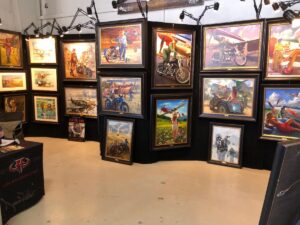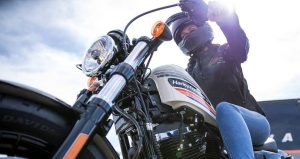The First H3LLRAISER Show
By Wayfarer |
 And the first 5-Ball Leathers Produced Los Angeles Event
by Frankie
My friend’s father owns a warehouse In Boyle Heights that’s in the middle of being re-leased and currently vacant. He told me I had a month to pull something off before… We reached out to Carrie from Choppers Mag and started the uphill battle of planning everything.
We pooled our resources to make the H3LLRAISER BIKE SHOW as cool and fun as possible within our budget (pretty much 5k) and limited time–three weeks.
And the first 5-Ball Leathers Produced Los Angeles Event
by Frankie
My friend’s father owns a warehouse In Boyle Heights that’s in the middle of being re-leased and currently vacant. He told me I had a month to pull something off before… We reached out to Carrie from Choppers Mag and started the uphill battle of planning everything.
We pooled our resources to make the H3LLRAISER BIKE SHOW as cool and fun as possible within our budget (pretty much 5k) and limited time–three weeks.
Click here and check out the wild event photos and artistic endeavors, only at Bikernet.com
* * * *

The 5-Ball Racing Garage Online Shop has products you needed & never found anywhere else!!! Click and Explore.
THE FIRST H3LLRAISER SHOW
By Frankie Ball Jr. |

The Five Ball “H3LLRAISER” invitational was a show that was put together in a rush due to crazy circumstances.



My friend’s father owns a warehouse In Boyle Heights that’s in the middle of being re-leased and currently vacant. He told me I had a month to pull something off before… We reached out to Carrie from Choppers Mag and started the uphill battle of planning everything.



Cary Brobeck from Choppers Magazine backed me 100 percent of the way and we pooled our resources to make the H3LLRAISER BIKE SHOW as cool and fun as possible within our budget (pretty much 5k) and limited time–three weeks.



“Yeah,” Cary said, “it was way bigger than we anticipated. Frankie did such a good job.”



We invited 20 builders, 20 artist, 20 photographers, 4 bands and 17 venders. It was all love and friends who helped pull it together and everyone had a good time. No drama. No bullshit.



We were expecting 300 people, maybe 500 max. I think about 1000 came and went through out the galvanized tin doors. The Chopper Gods were on our side that day and everyone came to pay homage to the Great Keith “Bandit” Ball and Five Ball Racing leathers.



“Frankie had a good turn out,” Zack, a Long Beach rider said. “I got there early and stayed a couple of hours. It was a black jeans, purple-haired crowd.”



From the overall consensus, we put on the coolest show in Los Angeles this year and people are already asking about the next one. The melting pot of Southern California sub culture was all in one spot and the energy was undeniable. If you didn’t know about the Ball Brigade before Sunday, you sure do now.



–Frank Ball Jr.


EPA Accepting Comments Concerning California’s ICE Ban
By Wayfarer |

EPA Accepting Comments Concerning California’s ICE Ban—Send Your Concerns Now
The California Air Resources Board’s (CARB) “Advanced Clean Cars II” (ACC II) regulations ban the sale of new internal combustion engine vehicles by 2035. ACC II requires that 35% of new cars, SUVs, and small trucks sold in California must be zero-emissions vehicles (ZEV) starting in 2026. The regulation increases ZEV sales requirements by 6% to 8% annually through 2035, when 100% of new vehicles sold in California must be ZEV – eliminating the sale of any new vehicles that are gas-powered.
Before ACC II can be implemented, CARB must receive a waiver from the U.S. Environmental Protection Agency (EPA) for its regulation to take effect. The SAN opposes ACC II because seventeen states, representing nearly 40% of the American population, have previously adopted California motor vehicle emission laws. To date, nine states and the District of Columbia have already adopted ACC II; three states have adopted ACC II through 2032, which requires 87% of new motor vehicle sales to be ZEV; and two states have started the regulatory process to adopt ACC II.
Learn More and Send an email to your officials with one click!
Visit https://p2a.co/bz7dbpm
* * *
Our Sacred Democracy Once Again In Peril
By J. J. Solari |

The owner of The Los Angeles Times is firing so many of his hacks that all the other hacks at “major news entities” are freaking out about it and WRITING about it. While they can! HAHAHAHAHAHA
This is so fucking newsworthy that even Congress is freaking out! At least Adam Schiff is. And he’s apparently doing Shitshow Harris’s job. He’s second in command at the White house and he is looking to become a senator so if Biden wins the election and Schiff becomes a senator….he’ll basically be President of the United (more or less) States.
For the moment however somebody has to be vice president, Kamala doesn’t know what the fuck anything is or does. And Vice President Schiff is NOT happy about the owner of a newspaper running his own newspaper. Because if you’re a newspaper owner and you are firing your journalists that can only mean that you are going to become threat to our sacred democracy that is run by Communist writers at “news” conglomerates.

The Los Angeles times is considered in the shitworld of news-journalism the distant second – but still second – to the lofty and godlike entity called the New York Times which is the ultimate job site for the failed novelists of news-journalism to end up at in order to be called gods of the written word aimed at enlightening mankind, and, or, their stupid readers as they probably haughtily call their readers. Assuming they have any.

The degree of internal bleeding at Kim Chee’s powerhouse of emptyness is 30 to 40 million dollars a year. What was going through his head when he bought the rag at a time when the “menace of social media and independent observers” not journalist, college-graduate reporters, came into existence overnight, each with his own expertise and style and communication skills focused on specialization aimed at people who were actually interested in things other than political crap, and who in fact routinely mock political crap…..is anybody’s guess. He clearly didn’t see this coming. He was likely in the med lab. He is Chinese after all. Those inscrutable rascals DO seem to like tinkering with little tiny life forms inside test tubes and wriggling across petri dishes. And he thinks that some “next generation” is going to even be aware that “news journalism” (political-agenda propagandering) exists? He needs to stick to creating whatever it is he creates in his medical labs and let the UN Health Advisors run the world, not news hacks.

Now the reason the printed-news empires are declaring the LA Times disintegration as something that must be stopped and that the LA Times must remain in existence even – probably – via eternal financing via government printing presses if necessary – is because if the LA Times actually disappears…..then this is a trend that will spread. Kinda like a pandemic. Only a real one this time. One that will actually keep us safe. From hacks.
https://www.nytimes.com/2024/01/22/business/media/los-angeles-times-tensions-cuts.html

The “news” and government are close, symbiotic parasites, which I explain in lengthy detail in my unpublished government-journalism translation dictionary which at the moment only exists on my laptop because what am I, Random House Publishers? And because they – news hacks and bureaucrats in office – rely on each other for continued existence you SOON will be being barraged by urgent panic-button hysteria from the likes of David Muir and Anderson Cooper and Rachel Maddow and whatever The View is that the the loss of “the news” is a national health emergency requiring the citizenry to pay higher taxes, assuming there’s still some altitude available up there where taxes already are…..to keep “the press” as a “viable safeguard against the enemies of democracy.” That’s what’s coming: you being forced to pay for news agencies you are not interested in. HAHA, thanks to Ling Ting Tao, or whatever the fuck his name is.

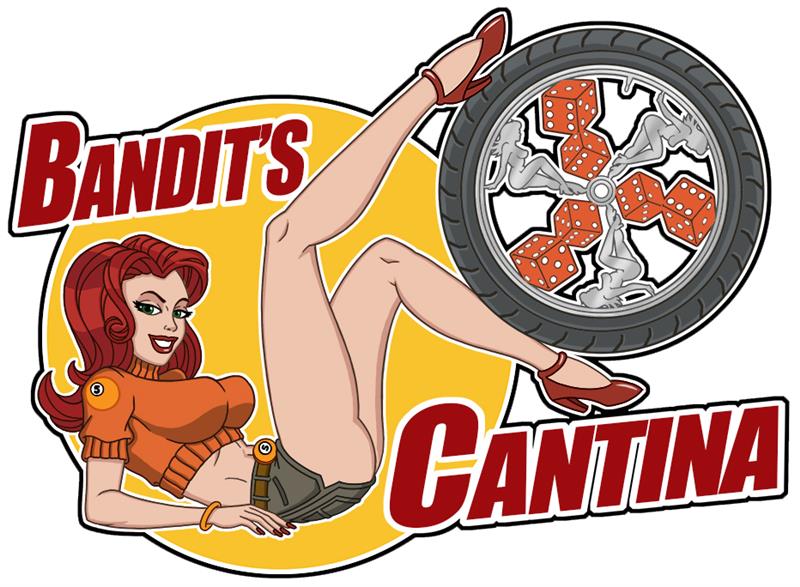
David Uhl: Gallery at the Colorado Motorcycle Expo
By Wayfarer |
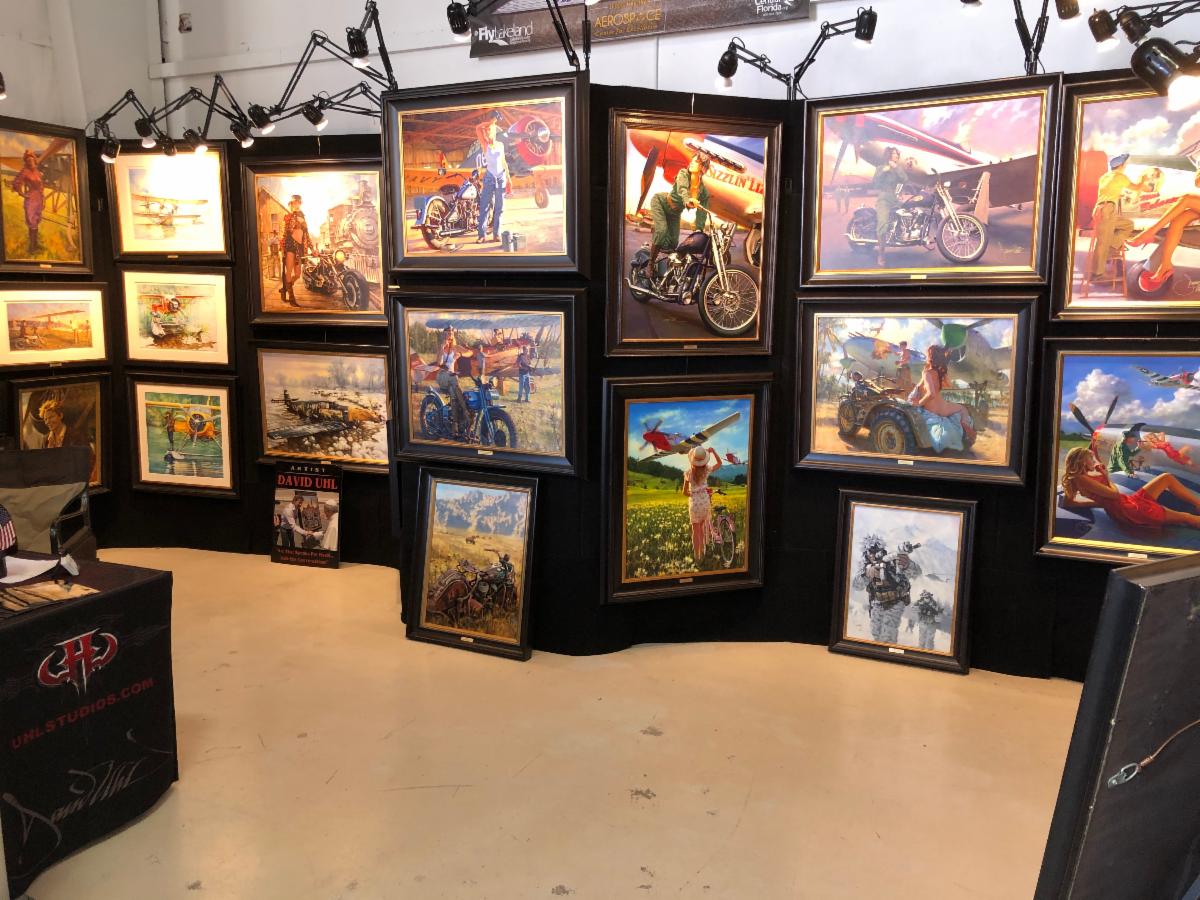
Greetings to all and welcome to our new subscribers!
We will be displaying David’s work at this weekend’s Colorado Motorcycle Expo at the National Western Complex here in Denver.
Show hours are 9a – 7p tomorrow and 9a – 4p on Sunday.
If you’ll be attending, please stop in and say hello.
On a different note, Daytona is right around the corner. I’ll be setting up the gallery there on February 28th. More about Daytona later.
Thanks for your time and have a great weekend!
All the best,
Greg Rhodes
International Sales Director
David Uhl Fine Art
Uhl Studios
303-913-4840
In Memory: Phil Stadden’s celebration of life
By Wayfarer |

Hello Hamsters,
Phil Stadden’s celebration of life is tomorrow, Saturday, January 27th.
Food & drinks will be served at Phil’s celebration of life.
Thank you,
Laura
THE TRUE BIKERNET WEEKLY NEWS for January 25, 2024
By Bandit |
Hey,
Tucker Carlson is threatening to go to Canada to question the Canadian totalitarian regime. Actually, he did and you can watch his speech. We are living in such strange times. What’s so strange about each incident is the truth. Does any politician believe the truth won’t surface? Maybe they can ignore it today, but tomorrow it won’t shine? I don’t think so. Of course, that’s why they try to control the media. Hang on!
Let’s hit the news.

The Bikernet Weekly News is sponsored in part by companies who also dig Freedom including: Cycle Source Magazine, the MRF, Iron Trader News, ChopperTown, BorntoRide.com and the Sturgis Motorcycle Museum.
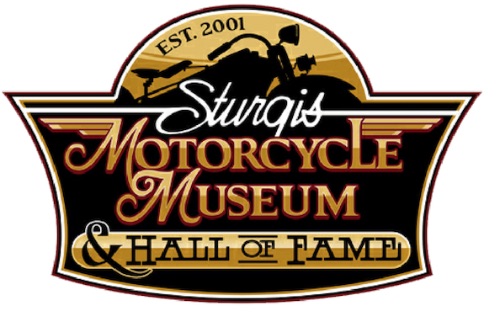


It gets worse. They can’t install them on street motorcycles. If you buy a cam from your local shop you will need to remove your license plate or hide your street bike when you buy it. It’s nut, but that’s not all. The dealer is forced to have you, the rider/builder also sign a waiver that this product won’t be used on the street.
It makes all of us criminals for nothing and why? Is it doomsday, no. Drag Specialties is covering their collective asses, so the EPA won’t come after them, so the dealers must sign. Then the dealer makes you sign so the agency won’t come after them. So, who’s on the hook. You!
We need to build the IMA right now and attempt to fight back.
–Bandit



Black Hills social media will be at the museum Tuesday at 10am to take video and photos for the upcoming press release.
Press release plan, created in collaboration with Steve Piehl. The initial release is scheduled for February 12th, avoiding the week of February 5th due to AIMExpo 2024 in Las Vegas. It will cover updates about myself, new board members, and current members.
A second release on February 19th will focus on Hall of Fame (HOF) inductees.
We plan to share news with Steve’s connections in powersports, integrated media, and local media including TV.
–Heidi Haro
Executive Director
Sturgis Motorcycle Museum & Hall of Fame


‘BIKERS AGAINST PREDATORS’ Hunts Down Pedophiles in the Heartland, Leading to Multiple Arrests
In a series of events that has garnered attention from multiple communities in the Heartland, an organization of do-gooders has demonstrated an out-of-the-box approach to stopping pedophiles. The group, which is called “Bikers Against Predators,” has been conducting operations to catch sex offenders.
The organization, which is comprised of motorcyclists, employs various methods to hunt these individuals down and aid law enforcement in apprehending them. Recently, the group proved instrumental in catching three different suspects.
There are open investigations in three Heartland communities after an organization held operations to catch sex offenders in each town.
The group “Bikers Against Predators” posted videos they say show Bootheel men who thought they were meeting with minors for sex.
These videos reportedly show men from the Bootheel region attempting to meet up with who they believed were underaged girls–but were really decoys set up by the organization.
“We are more than willing to work with any organization that’s out here trying to protect the citizens of the United States,” said Caruthersville Chief of Police Terry Privett.
Chief Privett said his department responded to a call from Bikers Against Predators this past weekend.
“Officers responded to that location, made contact with members of Bikers Against Predators and basically that organization turned over evidence to the officers that allowed them to initiate a criminal investigation against the suspect,” he said.
Now, the suspect has been charged.
According to online court records, Stephen M. Eubanks of Kennett, Missouri faces one felony count of enticement or attempted enticement of a child (actor 21 years of age or older and child less than 15 years of age) and one misdemeanor of furnishing pornographic material or attempt to furnish to a minor. His bond was set at $25,000 cash only.
In another case, the organization helped to catch a suspect in the same manner.
A second investigation happened over the weekend. 50-year-old Joseph James Craig of Dexter, Mo. is now in custody.
Bikers Against Predators called the Bernie Police Department to report property damage after Craig ran into some guide wire with his truck as he abruptly left after the group confronted him on the property of a local school.
According to the Stoddard County Sheriff’s Office, Craig is now facing charges for leaving the scene of an accident, first-degree property damage and driving while revoked/suspended. His bond was set a $10,000 cash only.
On Tuesday, another suspect was apprehended after local police received information from the organization.
McKenzie Q. Surritte, age 29, has been charged with felony enticement or attempted enticement of a child and is being held on a $25,000 cash or surety bond.
According to the probable cause statement, people working for Bikers Against Predators had contacted West Plains Police about a potential sexual predator. Bikers Against Predators is a group that locates potential sexual predators using fake accounts, typically pretending to be a minor. The group member showed police messages between the fake account and Surritte where the suspect attempted to set up a sexual meeting with the fake minor.
In post-Miranda interviews with authorities, Surritte allegedly noted he knew the person he was messaging was a 13-year-old female and asked for photos and sexual favors of the minor.
Bikers Against Predators is a 501c3 nonprofit organization based in northern Indiana “that is acting against online child predators” and spreading “awareness and education to as many citizens as possible while having these predators face justice for their crimes,” according to the group’s website.
The response from law enforcement has been mostly positive, if cautionary. Kennett Chief of Police Kenny Wilson told reporters that he commends the group for their operations, “but we just have to make sure when we get these suspects we do it the right way.”
He continued, explaining that law enforcement officers “are just going to learn a lot from this investigation because it’s not normally how we like to try to do things, so we are going to see what the legal hurdles are going to be.”
These reports illustrate how members of the community can take responsibility for addressing crime where they live. However, there are complexities involved, as Wilson noted. The group is clearly doing good work, but if they happen to conduct their operations in a way that prevents the authorities from getting a conviction due to procedural matters, it could allow some of these predators to continue victimizing children.
Nevertheless, it appears the organization’s members know what they are doing. On their website, they state that they have exposed 225 online child predators “with more currently in the process.”
Bikers Against Predators provides a compelling example of how concerned citizens can address problems in their communities as long as they are doing so in a way that does not make the job of law enforcement harder. All in all, it appears this group is doing good work.
–Jeff Charles
Jeff Charles is the host of “A Fresh Perspective” podcast. He is a contributor for RedState, Newsweek Opinion and also has a Substack called “Chasing Liberty.”
Jeff is also a freelance writer and political contributor who has appeared on Fox News, The Hill’s “Rising,” Fox Soul, Newsmax, and the First TV Network.
He enjoys reading, binging TV shows, learning to play the banjo (badly), and all things nerdy. He also believes that any steak cooked above medium rare is burnt, and an abomination.


BRAND NEW Bikernet Reader Comment!—
Bikernet’s Scotter Tramp Scotty: BETSY’S BASH UP
https://www.bikernet.com/pages/BETSYS_BASH_UP.aspx
Love the story, would love to hit the road soon. Look forward to reading and learning all about life on the road on my bike. Until next story, ride on.
–Jamez
Hawthorne Florida , FL
“Where is Scooter Tramp Scotty. Haven’t heard from him is awhile.” –Bandit

![]()
GREASE AND GEARS TV LIVE—
We’re thrilled to announce the release of our latest video, Rick Bray’s Vasko Flyer, A Tribute To Johnny Chop!
We can’t wait for you to see it. You can watch the video now on our website Grease & Gears TV – please feel free to share it. We hope you enjoy watching it as much as we enjoyed creating it. Thank you for your continued support!
–Chris and Heather Callen
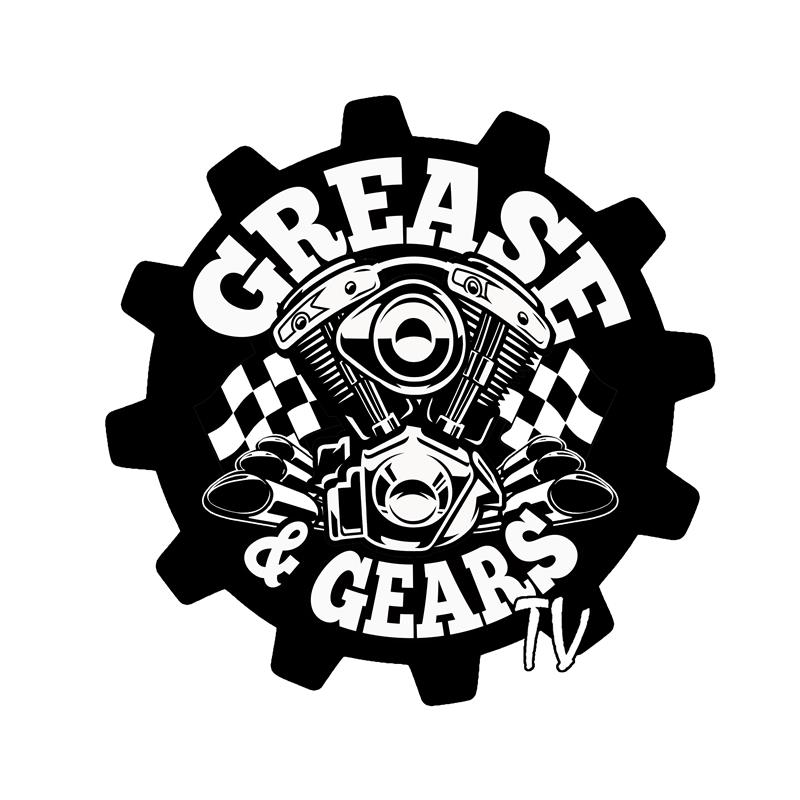


THUMP, SOUND, RYTHM AND BEAT—
I have owned three Royal Enfields. My first one was the right side gear shift 350cc with a really long silencer that met demands of police for noise and emission.
The second one was a 500cc Bullet with a similar looking silencer (muffler) but it had a connection near the engine that made it impossible to install any factory issued leg-guard except their straight rod.
I sold both of these Enfields and only last year came across a very good engine that had a right-side-gear shift. This was my first used motorcycle purchase. It came with a nice “Indore silencer” (one needs to google that, an aftermarket part)—but as luck would have it, the police, during festival of lights, Diwali, decided I was making too much noise in the city.
I deposited the silencer since there was no point arguing or negotiating –the silencer was indeed too loud for my taste as well. I managed to search and find a suitable silencer to reduce the noise levels of this 2004 model 350cc engine.

Search turned out a Classic 350cc blacked-out BS4 silencer that seemed to fit with the help of a bracket. Many people confuse it as an Enfield Thunderbird silencer but it’s a stamped genuine BS4 silencer from Royal Enfield for Classic 350.
I guess, eventually I will shell out and make a proper silencer search. This “workaround” silencer was a truly desperate attempt to keep the Enfield running till I can patiently get hold of an ideal solution–one that satisfies the aesthetics and the cops.
I know, some may say this doesn’t look too bad– and it does not make an unwanted noise–it has a nice thump, thanks also to the 20-year-old cast iron engine—but the bracket that joins it is not ideal for long distance trips, especially out of city.
I have also since then done the PUC (emission certification) for the motorcycle and it turned out better numbers than before–but that may be influenced also by a thorough servicing that included change of oil and carburetor cleaning, etc.

BTW: the exhaust note of my Hero XPulse 200 BS6 is also quite strong since it went beyond 8000+ kms. Nothing wrong with its engine or stock silencer. It just gives a nice rumbling note as if ready for off-roads rather than the city.
A thump is a thump. Whereas the commonly seen blaring dilapidated diesel rickshaw type of muffler does not dignify the Enfield rider.
—Ujjwal Dey
International street tech
Bikernet.com™


FIRST QUOTE OF THE WEEK—
“Have more than you show, Speak less than you know.” – William Shakespeare
–From Epoch Bright


SOUTH DAKOTA GUN NUT REPORT—
South Dakota: Pro-Gun Bills Pass Respective Chambers
Recently, two pro-gun bills passed their respective chambers and are now being heard in Committee.
Senate Bill 39, a measure prohibiting homeowners associations from placing restrictions on firearms and ammunition, passed out of the state Senate by a vote of 30-3. Now SB 39 has moved to the House and will be heard in the House Commerce Committee on Monday, January 22nd, 2024.
House Bill 1035, a measure extending the grace period for renewal of an enhanced permit to carry from 180 days to 12 months, passed the state House unanimously 69-0. Now HB 1035 has moved to the Senate and will be heard in the Senate Judiciary Committee on Tuesday, January 23rd, 2024.
Please contact your legislators and urge them to SUPPORT SB 39 and HB 1035!



THIS DAY IN HISTORY–January 25 1905. World’s largest diamond found
A 3,106-carat diamond is discovered in South Africa and christened the “Cullinan.” It was the largest diamond ever found. On January 25, 1905, at the Premier Mine in Pretoria, South Africa, a 3,106-carat diamond is discovered during a routine inspection by the mine’s superintendent. Weighing 1.33 pounds.
–Read the whole report at History Channel.com


HARLEY-DAVIDSON USHERS IN A NEW ERA OF MOTORCYCLE TOURING, REIMAGINING TWO OF THE MOST ICONIC MOTORCYCLES IN HISTORY AND SETTING A NEW STANDARD FOR THE FUTURE OF ADVENTURE ON TWO WHEELS
The All-New Street Glide and Road Glide Models Feature Exceptional Performance, Cutting-Edge Innovation, and Bold New Design
Celebrating 25Yyears of Custom Vehicle Operations, the CVO Lineup Expands with the Introduction of the All-New CVO Road Glide ST, Representing the Pinnacle of Bagger Performance, and the CVO Pan America, Fully Kitted out for Extraordinary Adventures
Harley-Davidson today revealed four new 2024 motorcycle models ushering in a new era of touring performance, technology, and design. The all-new Street Glide and Road Glide models featuring the new Milwaukee-Eight 117, are more powerful, comfortable, and lighter, and packed with advanced technology, including a new infotainment system, all wrapped up in a dramatic new visual design.
Commemorating the 25th anniversary of Custom Vehicle Operations, the new CVO Road Glide ST model takes hot rod bagger performance to the next level with racing inspired high performance suspension and brakes, and a potent new Milwaukee-Eight 121 HO engine, and low final drive ratio that combine to produce the kind of acceleration and mid-range thrust aggressive riders crave. And the new CVO Pan America debuts as the first CVO offering in the adventure touring segment, ready to take on anything with a host of standard equipment all wrapped up in exclusive custom paint and finishes.
Each of these 2024 models are scheduled to reach authorized Harley-Davidson dealerships in January 2024.
The 2024 Street Glide and Road Glide models are more powerful, lighter, and more dynamic, and feature all-new visual design elements that combine a cohesive dynamic flow from the front fenders to the saddlebags.
Both models feature an evolved fairing profile that appears refreshingly modern yet retains Harley-Davidson design DNA that makes them instantly familiar. Additional key features include:
An updated Milwaukee-Eight 117 V-Twin engine features a new cooling system which further optimizes thermal comfort for the rider and enhanced intake and exhaust flow to boost performance.
Selectable Ride Modes – Road, Sport, Rain and Custom – electronically control the performance characteristics of the motorcycle.
Infotainment technology is powered by Skyline OS and presented on a 12.3-inch TFT color touch screen that replaces all analog instrumentation and most switches. A new 200-watt audio amplifier powers a pair of fairing-mounted speakers.
Improved aerodynamics enhance rider comfort and reduce subjective helmet buffeting at highway speed by an average of 60 percent. Rear suspension travel is increased to 3-inches. A redesigned one-piece seat shape and padding materials offer a significant improvement in long-range comfort for most riders.
NEW CVO Road Glide ST Model Leads 2024 CVO Lineup
The CVO Road Glide ST is the quickest, fastest, and most-sophisticated performance bagger ever produced by Harley-Davidson and represents a unique collection of components providing high value to performance minded riders. A deep solo seat and six-inch riser paired with a moto handlebar put the rider in an aggressive, upright position with West Coast custom style.

Key features include:
Two premium paint choices: Golden White Pearl or Raven Metallic. A Screamin’ Eagle graphic on the fairing sides and fuel tank is inspired by the Screamin’ Eagle Harley-Davidson Factory motorcycles raced in the MotoAmerica Mission King of the Baggers series. CVO 25th Anniversary graphics celebrate a milestone in factory customization.
The Milwaukee-Eight 121 High Output V-Twin engine is exclusive to the CVO Road Glide ST model, tuned to produce 127 horsepower (94kW) and 145 lb. ft. (193 Nm) of torque – the most horsepower and torque ever from a factory-installed engine in a production Harley-Davidson motorcycle. A lower final drive ratio is selected to enhance acceleration performance in every gear.
The use of alternate materials helps reduce dry weight to 800 pounds (363 kg). Mufflers have lightweight titanium shells and forged carbon fiber end caps; forged carbon fiber composite is used to form the front fender, seat cowl and tank console; the oil pan is formed of lightweight composite; and wheel design and wave-style front brake rotors are optimized to minimize unsprung weight.
Fully adjustable front and rear suspension includes SHOWA rear shock absorbers with remote reservoirs and inverted 47mm SHOWA 1×1 forks.
Premium Brembo braking components provide outstanding braking feel and performance for added rider confidence.
Selectable Ride Modes – Road, Sport, Track, Track Plus, Rain, and multiple Custom modes – electronically control the performance characteristics of the motorcycle.
A suite of infotainment technology is powered by Skyline OS. A color touch screen replaces all analog instrumentation and most switches. A premium audio system features a 500-watt amplifier and Harley-Davidson Audio powered by Rockford Fosgate Stage II 6.5-inch fairing speakers.
The CVO Pan America motorcycle is a new vehicle of discovery and the CVO program’s first adventure touring (ADV) motorcycle. All of the features that have made the Pan America 1250 Special model a leading choice among discerning global Adventure Touring riders are retained, including the smooth-and-powerful Revolution Max 1250 engine, semi-active front and rear suspension, touch screen display, selectable ride modes, and Daymaker Adaptive Headlamp technology.
The CVO Pan America model is outfitted with a host of rugged accessories selected to enhance the journey, including Adaptive Ride Height suspension, rugged aluminum top and side cases, a Screamin’ Eagle quickshifter, tubeless laced wheels, auxiliary LED forward lighting, an aluminum skid plate, providing excellent value to the adventure rider who wants it all and more.
Go to H-D.com to learn more about the complete line of Harley-Davidson motorcycles.


[page break]
UNREAL NEWS OF THE WEEK—
The City Government of Portland Oregon dismantled their DEI program and sent the staff packing. The nearly 1 million annual budget will return to the city coffers. The county commissioner attempted to shut it down last year but made it happen this year.
See, the truth ultimately surfaces and we can return to living in the best of times and cherish freedom.
–Bandit


LIFESTYLE CYCLES DEAL OF THE WEEK—
2013 Harley-Davidson FLHX – Street Glide
Python exhaust providing the Harley ‘rumble’.
Stock# 14140C

2013 Harley Davidson FLHX Street glide with only 35,159 miles!
The pictures of this bike don’t measure up to the true ride and feel of the 2013 Street glide and Lifestyle Cycles is ready to see you go home with it tODAY!

* Mercedes Selenite Grey Paintjob
* Saddlemen Step-Up Seat with Double Diamond Lattice Stitch
* Street Tank Black Engine Bar
* Rider Floorboards
* Passenger Mounted mini Floorboards
* 103 Cubic inch Twin Cam Motor
* Dual Front Brakes
* Hi-Flow Intake
* 4 Point Docking Hardware
* 12-Inch Black Meathook Handlebars
* LED Headlight and Front Turn Signals
* Aftermarket Coffin Shaped Mirrors
* Rockform Phone Mount
* Custom Front Fender
* Performance Machine Black Contour Grips
* LED Rear Tail Lights
* Rinehart Racing Dual Black Exhaust
* Heel/Toe Shifter
* 21-Inch Front Fat Black Spoke and 17-Inch Rear Fat Black Spoke Wheels
* These tires look ready to hit the road!

This bike is only $16,995.00
Plus, license, $85.00 documentation fee, and local sales tax. NO HIDDEN FEES like some dealers. And we have no reconditioning or prep fees. This bike has passed Lifestyle Cycles rigorous 92-point safety/mechanical/structural inspection.This motorcycle has not been refurbished and does not come with any warranty expressed or implied! EXTENDED WARRANTIES are available!
Fill out an online application today. We have EZ FINANCING
Lifestyle Cycles is located at 1510 State College Blvd,Anaheim,CA,92806. Open 7 days a week.
NOT LOCAL? WE HAVE SHIPPING AVAILABLE! Call today (714) 490-0155.
We are California’s pre-owned Harley Mega-Store with over 200 Pre-Owned Harley-Davidsons in stock! To view our current inventory,
Please visit www.LifestyleCycles.com or www.facebook.com/LifestyleCyclesUsedHarleys/


TURN 14 POWERSPORTS– Moving to New Home, Transition Updates from Turn 14 Distribution
Staff members of Turn 14 Powersports are moving into their new offices, located in suburban Fort Worth. The new building will house the company’s brand management, product development and marketing staff, led by recently announced Turn 14 Powersports President Bob Schuetz.
“The collaboration that happens when we are all under one roof is really important, and our people are happy to be back together,” said Schuetz. “Our move into this new facility will be a great start to an important year for Turn 14 Powersports.”
The 10,000-square foot office space is in a newly renovated building at 125 Bear Creek Parkway in Keller, Texas, which is northeast of Fort Worth. The move-in should be complete by the end of January 2024.
Transition Updates
The inventory of Tucker Powersports is now moved to Turn 14 Distribution’s three distribution centers, located in Pennsylvania, Texas and Nevada. It’s been a huge project for Turn 14 Distribution warehouse staff, with over 11,000 pallets of product, representing 146 brands and over 60,000 SKU’s moving into Turn 14 Distribution possession. The company expects all inventory to be checked in and available to dealers by the end of January 2024.
Turn 14 Distribution takes pride in its carefully curated line card, which is focused on quality over quantity. The company typically carries a full line of products from a tightly managed number of suppliers. The company is currently onboarding 146 product lines from the recent acquisition. The company expects that this task will be complete by the end of January 2024 and the products posted on turn14.com for dealer access at that time.

Powersports Sales and Marketing efforts are moving forward to assist dealers for Spring selling. Turn 14 Distribution uses both field territory managers and inside sales staff to support dealer needs. With this partnership, Turn 14 Distribution meets dealer needs in person in dealerships, while inside staff is available for prompt response to calls and emails. In addition, Turn 14 Distribution has a Customer Support Team, separate from Sales, to ensure the company is meeting dealer needs. The company is building a marketing team for Turn 14 Powersports, led by former Tucker Marketing VP Lesley Madsen, and additional marketing resources for distributed brands. The open positions on the Marketing Teams should be filled by Spring 2024.
Turn 14 Distribution’s industry-leading API and data exports are available today, and the company has engaged with all the leading DMS Systems (Lightspeed, DX1, etc.) and channel providers. A data team is working on enhancing product data so more information is available to Turn 14 Distribution’s dealers.
–Steve Piehl


NOT SO QUICK, New Bikernet Reader Comment!–
THE CHARMIN REVOLUTION OF HUMAN RECTAL HYGIENIC DE-FECALATIAL BUTTOCKSICAL PROTOCOLS
Click here to read this only on Bikernet.com
Well, J.J. has managed to get the drop on this business of, well, doing one’s business. I may have missed something here as I most often skim along a lengthy tryst between great writers and their beloved words. I qualify that lengthy is anything more than fifty words or any run away sentence of such a count.
What hit me like the sizzling drifts is my years of the paper chase. Since I was a small child, and yes that’s my excuse, I have held the very reason for my long held belief in the crucial importance of squared off t-paper. It’s the corner people; the corner.
The corner of the final sheet must yield that critical piece; the corner that is to be correctly removed from said sheet for the cleaning of the fingernail. I’m pretty sure that was addressed, but I digress. Thank you for sticking through with this diarrhea of poorly written crap, err uh prose. I pledge my fealty to the majestic JJ Solari.
–Sam
TX



MRF ROADSHOW STOPS– ABATE of New York
The MRF Roadshow also stopped in New York for the 50th Anniversary of ABATE in the Empire State. The ABATE of New York State Seminar was held in Albany and included a presentation on the value of working together from the MRF’s Traci Beaurivage. Traci is pictured above with Jim Barr of National COIR and Long Island ABATE President Chris Beckhans.


Hard Knocks Unlimited is thrilled to announce the launch of the HARD KNOCKS MOTO FEST, scheduled from June 21-23, 2024, at the renowned New Jersey Motorsports Park (NJMP). This electrifying event promises a weekend filled with vintage AHRMA Racing, a plethora of motorcycles, an array of vendors, and an abundance of moto-tainment for all ages.
The festival will showcase three days of adrenaline-pumping AHRMA vintage and modern alternative motorcycle racing on NJMP’s newly reconfigured Thunderbolt Raceway. Attendees will witness the thrilling spectacle of motorcycle racing, where the past and present of motorcycle technology converge in an unforgettable display of skill and performance.
The event will also host a variety of exhibiting vendors and local artists, offering attendees a chance to explore and purchase unique items and artworks. Vending opportunities are available now. Please email info@hardknocksmoto.com for a registration form.
A festival highlight is the 60,000-square-foot Swap Meet, an opportunity for vintage motorcycle collectors and enthusiasts looking to complete a restoration project or enhance their collection. Interested participants can secure their spot in this exciting swap meet by emailing info@hardknocksmoto.com.
In addition to the racing excitement, the festival will feature an impressive display of custom bikes. These works of craftsmanship and design will be a banquet for the eyes of motorcycle enthusiasts.
Families are welcome to enjoy a weekend filled with more than just motorsports. The HARD KNOCKS MOTO FEST will provide a range of food options and entertainment suitable for all ages, ensuring a fun and memorable experience for everyone.
Tickets for this must-attend event are available online, at www.njmp.com, starting at an affordable price of just $10. Children aged 12 and under can enjoy the festivities free of charge!
Take advantage of the opportunity to be part of this groundbreaking event. Join us at the HARD KNOCKS MOTO FEST for a weekend of excitement, discovery, and family fun.


(and another is on the way – scroll for more!)
Theory of a Deadman
Wednesday, Aug. 7, 2024
40% OFF 3-DAY PASSES
ENDS WEDNESDAY, JAN. 31
AT 5 P.M. MST
Learn More
Reserve Now

Jelly Roll, Kid Rock, Travis Tritt, Theory of a Deadman and Aaron Lewis are the first of dozens to be announced as part of the Buffalo Chip’s diverse 2024 lineup that features rock, classic rock, and country rock. You won’t want to be anywhere else this August. It’s the Best Party Anywhere.



BIKERNET PANHEADS OF THE WEEK—








–Sam Burn
Antiquities Curator
Bikernet.com


All knowledge comes with cognizance of self
Two significant news events occurred over the past few hours.
European Union passed a resolution condemning India’s rising nationalistic fervor and of India’s dependence on Russian defence goods, oil and friendship.
The other epic news with celebrations on every street in India was casting away of the yoke of slavery by India. The temple for Lord Shri Ram was finally inaugurated by the Prime Minister in grand and pious manner today.
Pilgrimages have existed since before and after the invention of the three Abrahamic religions. Hinduism and Buddhism on the other hand is a “way of life” where the journey is within. Of course, they still are based with reference to specific locations on the planet. Hence the human nature to see it preserved if not also celebrated.
However, the temple is not just a new pilgrimage location on the crowded pilgrimage map for the diverse citizenry of India– a nation of many religions, cultures, languages and lifestyles. It is not just a tourism business. It is definitely not an assault on any other community’s rights, privileges or beliefs. It is the cognizance of our identity, culture, heritage and legacy.
Why would nationalism be wrong or bad? What is a nation and its people supposed to be if not nationalistic? Is a nation supposed to embrace “alien” culture and lifestyle to be civilized? Pretend to accept “alien” laws so that we buy “alien” goods and services and send all our resources and wealth to those “aliens” as has happened since over a thousand years? What great charity have these wealth and knowledge hoarding nations of Europe delivered in those thousand years. They are morally corrupt and culturally bankrupt. Isn’t it a good thing for people to identify with their place of existence and be nationalistic? Or should we become confused about our morals, genders, existence and purpose, so as to please the trending influencers and the handful of news corporations that spread propaganda rather than news through multitude of media and financing.
News is opinion instead of objective journalism globally now, including in India. It is for this reason, people around the world are gladly identifying with nationalism. An ideal and identity to belong to because it resembles their own self. Not the world oceans across where they sit and judge the life among orphans and pollution caused by their own greed. Their remote control operation of nations needs a counter alliance. Maybe China and USA will recognize the merit of it or maybe they will themselves riot on the streets, inject themselves with drugs and debt, and revel in civil war for having run out of overseas “action”.
Being united does not demand dissolution of personality and character. After all we are intending to build a global community of humans, not making soup. Let each be true to their own ways and yet share in a common vision for the planet. Why turn the humans into synchronized, homogenized robots or zombies when they can do more as they are now…as individuals? Be one with many resources. Be like India.
–UD


BLACK HILLS GUN NUT REPORT–
As for the Krag, you can get the ammo online. Check out:
https://ammoseek.com/ammo/30-40-krag
As for the shotgun, this varies with manufacturers and whether the shotgun shells are 2 3/4″ or 3″ magnums.
2 3/4″ is the standard that most people use.
Double-Ought 00 buckshot has eight or nine 30 caliber (0,33″) pellets
#4 Buckshot has 27 x 0,24″ pellets
00 will bring down a deer at close range, while #4 is better for coyotes and wild dogs out to 30-40 yards.
My preference is 00 since it has better penetration
Slugs are primarily used for deer hunting in states that don’t allow rifles and where there is a concern that a rifle bullet will go too far.
Slugs hit like a freight train out to 50 yards but you can still hit a target at 100 yards.

The value of shotguns in the criminal world is that there are no ballistics or rifling that can be matched back to the gun.
But a spent shell can be matched to a shotgun so these need to be picked up.
–Marko
Security specialist
Bandit’s Cantina



QUOTATION FROM CHARLIE CHAN—
A drop of water on a thirsty tongue more precious than gold in purse.
–Charlie Chan



MOTORCYCLE RIDERS FOUNDATION ALERT--Send a Letter to EPA Opposing California’s ICE Ban
Encourage opposition from officials on this proposal:
The California Air Resources Board’s (CARB) “Advanced Clean Cars II” (ACC II) regulations ban the sale of new internal combustion engine vehicles by 2035. ACC II requires that 35% of new cars, SUVs, and small trucks sold in California must be zero-emissions vehicles (ZEV) starting in 2026. The regulation increases ZEV sales requirements by 6% to 8% annually through 2035, when 100% of new vehicles sold in California must be ZEV – eliminating the sale of any new vehicles that are gas-powered.
Before ACC II can be implemented, CARB must receive a waiver from the U.S. Environmental Protection Agency (EPA) for its regulation to take effect. The SAN opposes ACC II because seventeen states, representing nearly 40% of the American population, have previously adopted California motor vehicle emission laws. To date, nine states and the District of Columbia have already adopted ACC II; three states have adopted ACC II through 2032, which requires 87% of new motor vehicle sales to be ZEV; and two states have started the regulatory process to adopt ACC II.
If the EPA grants California a waiver for ACC II, this far too-fast mandate will reduce vehicle choice and force Americans to purchase more expensive vehicles. ACC II, if implemented, would also disrupt automotive industry supply chains, devastate small automotive businesses, and eliminate large numbers of jobs in vehicle manufacturing, parts production, and repair businesses.
We need your help! The EPA is accepting comments through February 27, 2024, on whether it should grant a waiver for the ACC II regulations to take effect.
Officials Must Hear from You Right Away!
Use the website link for an overview and official contact.
ACT NOW

ANOTHER QUOTE OF THE WEEK–
“The way I see it, if you want the rainbow, you gotta put up with the rain.” –DOLLY PARTON

THE ELECTRIC BIKE BLUES—
Electric bikes, seen as a solution for tackling climate change, have caused a record number of fires in New York City.
According to figures released by the New York Fire Department to Fox News, e-bikes – powered by lithium-ion batteries – were responsible for 267 fires in the city.
They claimed 18 lives and caused 150 injuries, with fatalities increasing 200 per cent in 2023.
The latest figures show that sales of e-bikes in the US increased by 269 percent between 2019 and 2022. It is estimated that the market was worth $2.59 billion by the end of 2023.
They have been seen as a way of decarbonizing the US and Democratic members of Congress have sponsored legislation which would subsidize their purchase.
–WUWT


SPEAKING OF SILENCERS AND MUFFLERS–Sawicki Speed Introduces New “RT” Line of Exhausts
The Royal-T Racing design offers Harley-Davidson and Indian Motorcycle riders even more performance exhaust options from Sawicki Speed.
Sawicki Speed, performance motorcycle exhaust manufacturer based in Denver, NC, is revved up to introduce the “RT” line of exhaust systems for Harley-Davidsons and Indian Motorcycles.
Royal-T Racing founder Patrick Tilbury made a name for himself as lead fabricator for Jesse James’s Austin Speed Shop. His love for motorcycle racing and desire to blend performance with aesthetics led to the pie-cut welded muffler and CNC’d end cap that Royal-T became famous for. Sawicki Speed’s parent company, Proto Titan, was already manufacturing the final rounds of exhausts for Royal-T when they made the bold choice to acquire the design rights and include it in Sawicki Speed’s line-up of performance exhaust offerings.

Built on Sawicki Speed’s dyno-proven exhaust platform, the new RT pipes are constructed from hand-brushed 304 stainless steel and feature a custom tig-welded pie-cut turnout with a billet insert trim ring. Riders can expect to see considerable increases in torque and horsepower as well as significant weight savings over stock exhaust systems. All Sawicki Speed exhausts come with hardware for installation including proprietary exhaust gaskets, and come backed by Sawicki’s Limited Lifetime Warranty.
“Our pipes turn heads as it is,” explains Sawicki Speed President Chris Clark. “But with the new RT, riders will be getting a pipe that unlocks power, sounds amazing, and makes your bike look like it’s one-of-a-kind. We really wanted to preserve the legacy started by Royal-T Racing and bring this jewelpiece to more riders.”
Sawicki Speed is initially offering the RT exhaust for select Harley-Davidson models, including M8 Baggers, 6-speed Twin Cam Baggers and M8 Softails followed by Dynas and FXRs. More fitments are coming soon including Harley Sportsters and Twin Cam Softail models, as well as Indian Challenger, Chief and Scout models. The RT joins Sawicki’s other 2-into-1 exhausts available in various lengths and with multiple finish and end cap options, providing riders even more configurations to customize their motorcycles.

Sawicki Speed RT exhausts are available now directly on Sawicki’s website. Learn more at www.sawickispeed.com, and be sure to follow Sawicki on Facebook, Instagram, TikTok and YouTube.


AMA Celebrates 100th Anniversary–
The American Motorcyclist Association (AMA) is gearing up for a year-long, historic celebration as it proudly commemorates its 100th anniversary in 2024.
For a century the AMA has been at the forefront of promoting and protecting the interests of motorcyclists, creating a vibrant community of enthusiasts dedicated to the joy of riding.
Since its inception in 1924, the AMA has played a pivotal role in shaping the landscape of motorcycling in the United States. With a rich history rooted in passion, advocacy and the freedom of the open road, the AMA has become a driving force for riders across the nation.
As one of the largest motorcycling organizations in the world, the AMA has consistently championed the rights of motorcyclists from all walks of life, evolving to embrace a diverse and growing community of riders.

Hey,
This isn’t exactly true, but we understand the 100 year PR effort. AMA restrictions caused the outlaw movement in America. They haven’t supported the freedom of choice behind helmet laws, which are as harmful as they are protective.
And currently they seem to be on board to support climate doomsday and unrelenting restrictions against fossil fuels. Or maybe there are being bullied by ESG, CARB and DEI efforts. They don’t seem to be supporting any efforts to stop ICE bans.
What can I say?
–Bandit


ANOTHER New Bikernet Reader Comment!–
The First Biker Memorial Wall
https://www.bikernet.com/pages/The_First_Biker_Memorial_Wall.aspx
Need info on how and who to contact for more information on this memoria wall.
–Minion
troybaylous02@gmail.com
Kingston, OH
This memorial was founded by Ohio Abate members and friends on July 24th 1993…Since then the wall has been growing…this wall is located in Hopedale, Ohio at the American Legion. This is very much out in the country and one would never know this wall exists!!! I stumbled upon the Memorial Wall back in 2000 by a fellow that I was dating. He took me there…
Memorial36
–Denise
luuezz@connecttime.net
–from Rogue
Motorcycle Hall Of Fame Member 2005
www.bikerrogue.com


ANOTHER STARTLING NEWS ITEM– the LA Times “laid off” 115 “journalists.” They say there’s no good news.
This flap at the LA Times is so menacing to the left apparently that Schiff and a few other commie Dems in congress wrote a letter to the owner saying that he is endangering our democracy during an election year.
I like the owner already! hahahahahaha apparently this is as Trump would say yuuuuuj “This is yuuuuj. Gonna be yuuuuuj.”
–J.J. Solari


DIRECT FROM THE VETERANS ADMINISTRATION–Free Backcountry Expeditions for Veterans
Veterans with disabilities, seen and unseen, can apply now for the 2024 season of No Barriers Warriors’ programs including expeditions in Colorado, Wyoming and North Carolina.
“I always support the DAV. I think every retired or disabled Vet should join.” –Bandit


MRF ROADSHOW STOPS–ABATE of Illinois
The MRF Roadshow pulled into Springfield Illinois this past weekend. The ABATE of Illinois Seminar was held during a cold snap, with high temperatures barely reaching 10° by midday. Despite the frigid temperatures, the event was well attended.
The pictures above show presentations by Rod Taylor and Bob “Mouse” Ellinger. Rod Taylor is with the law firm Christopher & Taylor and he is the ABATE Legal Services provider in Illinois. ABATE of Illinois State Coordinator Bob “Mouse” Ellinger is also pictured presenting the “Rich Neb Award”, ABATE of Illinois’ highest honor for outstanding contributions to motorcycling.
The 2024 recipient of the “Rich Neb Award” is Wayne Cornick. MRF President Kirk “Hardtail” Willard is also seen above, presenting ABATE of Illinois’ contributions to the efforts of the MRF.


COMMENT FROM THE BIKERNET BLOG—-Spain is rolling out mandatory Motorcycle gear to solve rising fatalities
URL: https://blog.bikernet.com/spain-is-rolling-out-mandatory-motorcycle-gear-to-solve-rising-fatalities/
Time is a commodity that once spent is gone. We owe so much to Rogue, Bandit, and many others for carrying the load. Time to speak up and to make our voices heard. Do it right and we’ll win the fight. Thanks to Wayfarer for bringing this to our attention.
–Sam


FINAL QUOTE OF THE WEEK—
“To improve is to change, so to be perfect is to have changed often.” –WINSTON CHURCHILL
–from Epoch Times

“Swoosh” as a ball of fire sped past my head. That is one of the many traps I must dodge in order to survive this dungeon and find the alleged Fountain of Youth. I had no intention in utilizing such power, but I know I can charge millions to people if I secure a secure a safe route. As I keep running and I enter a door.
“Is It over?” I asked myself
I look around and find myself surrounded by Knight statues holding swords. Soon, the statues eyes turn blue and they start pursing me.
“Oh boy” I uttered
–Julius Boom
BoomJ25@student.riverdell.org

“Riding to Roar”
Under the dark sky, a loud growl of multiple engines roared through the mountainous roads. The bikers, a diverse group of brothers who shared an equal passion for the open roads, carving through each curve with exhilaration. Each twist and turn they became closer to creating a brotherhood of warriors. With each mile beneath their wheels, the bond tightened, the smiles brightened, the eyes beneath dark shades lightened and freedom soared.
— Shafique Ibrahim
ShafiqueI25@student.riverdell.org


Support Good Times Nowhere Fast 12″ beanie in black, navy, green, or red.
Embroidered design, 60% cotton, 40% acrylic.


I DON’T KNOW—
Who does, but we’re trying to find out and get to the bottom of everything. This week has been fruitful but quirky.



We’ve made serious progress with John’s ’60 Panhead roller. I need to cut down an axle and alter a spacer for his Fab Kevin front disc brake kit. You’ll see it next week.

I ran over to look at a building for sale in Deadwood. I won’t go into all the thinking, but part of it would be a tattoo parlor for my son and grandson when they’re in town.

Adam Croft of Dime bag leather is working hard on his new place on Rt. 66. He’s been offered a chance to buy it, and for his sake, I hope it happens. This week he’s building a wooden lift for motorcycles. He’s going to paint his logo on the plywood top.

I’m working with Cary Brobeck and my Grandson, shown here with Chanel who helped him with his first show. We will cover it next week.

I drink whiskey twice a week whether I like it or not. I tried the Woodford reserve New Years Eve, while playing poker in the back of a saloon. Not bad.

The curation committee wanted some bikes for the Museum. I offered the Dicey Knucklehead, my ‘26 Peashooter and this Paughco/CrazyHorse/Baker 5-Ball Factory Racer.

New Nipple sticker from Fred Cuba on my Snap-On tool box.

Just a little additional pinstriping from Dr. Tim at Flat Earth, and Nikki’s husband from TNT in Spearfish will apply the final coat of flat clear. Close to final assembly.
There’s more, but I need to fire up the lathe and get cutting.
In the meantime, ride fast and free forever.
–Bandit
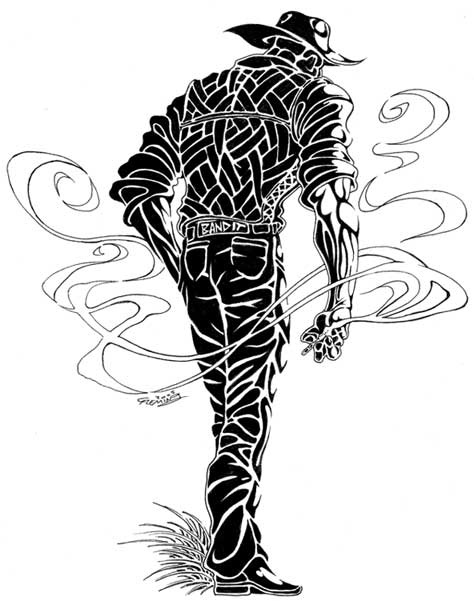
Is Green the New Gray Area
By Wayfarer |
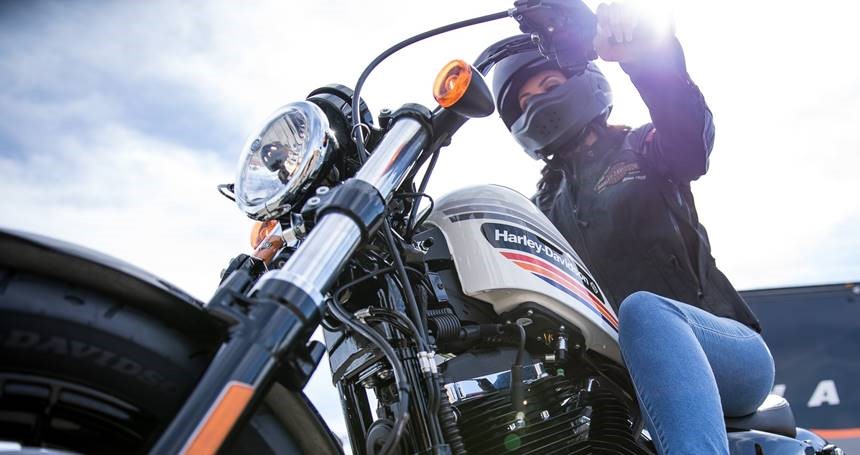
by Mark Buckner with images from Sam Burns
For as long as I can remember – which is getting to be a LONG time! – those of us who love riding motorcycles and have devoted a large part of our lives to preserving and protecting our way of life have been telling anyone who would listen that the enemies of motorcycling don’t just want to pass more and more restrictive laws where we’re concerned.
Their ultimate goal is to get us off the road entirely.
Click here to read this report only on Bikernet.com
* * * *

To Stay updated on all Motorcycle News and Events …
– simply Click & Subscribe to Bikernet’s FREE Weekly Newsletter
Drag Specialties demands waiver signatures
By Wayfarer |
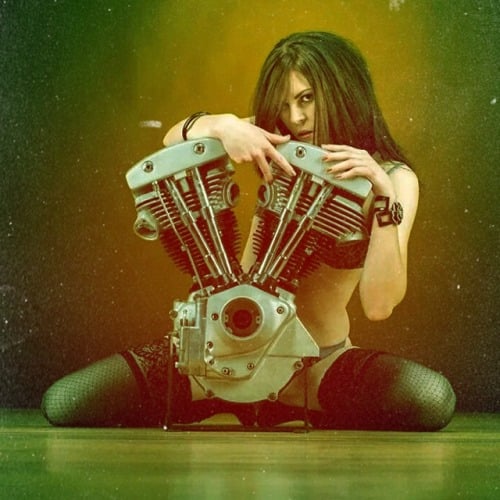
Hey, this is major important.
Drag Specialties is making it mandatory to sign a waiver before you can buy any performance parts from any shop. This is why you need to be on the alert. There is only one organization with the balls to fight back, the MRF and the new IMA with Bob Kay, Kirk Willard and myself. We won’t go down without a fight.
Join the MRF and the IMA
Visit https://mrf.org/
Visit https://mrf.org/join/join-mrf-imac/
* * *
The Soft Globes of Life
By Wayfarer |
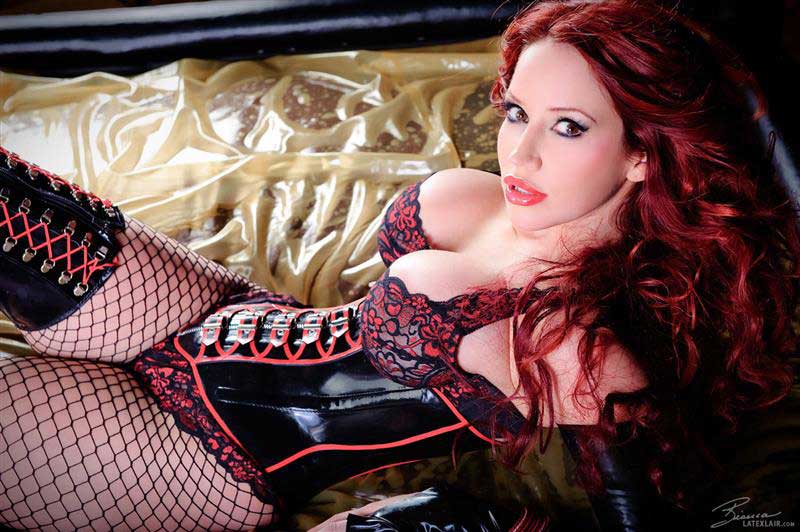
by Bandit with Images from Sam Burns
Sam Burns inspired me the other day, when he sent me a magnificent assemblage of beautiful women images. We couldn’t let them linger in a file without showing respect and love. Enjoy.
Click here to reminisce on the great powerful orbs that are so commonly found and not easily fondled.
* * * *
 For more madness, discover the Cantina Membership
For more madness, discover the Cantina Membership
Visit: https://www.bikernet.com/pages/custom/subscription.aspx


